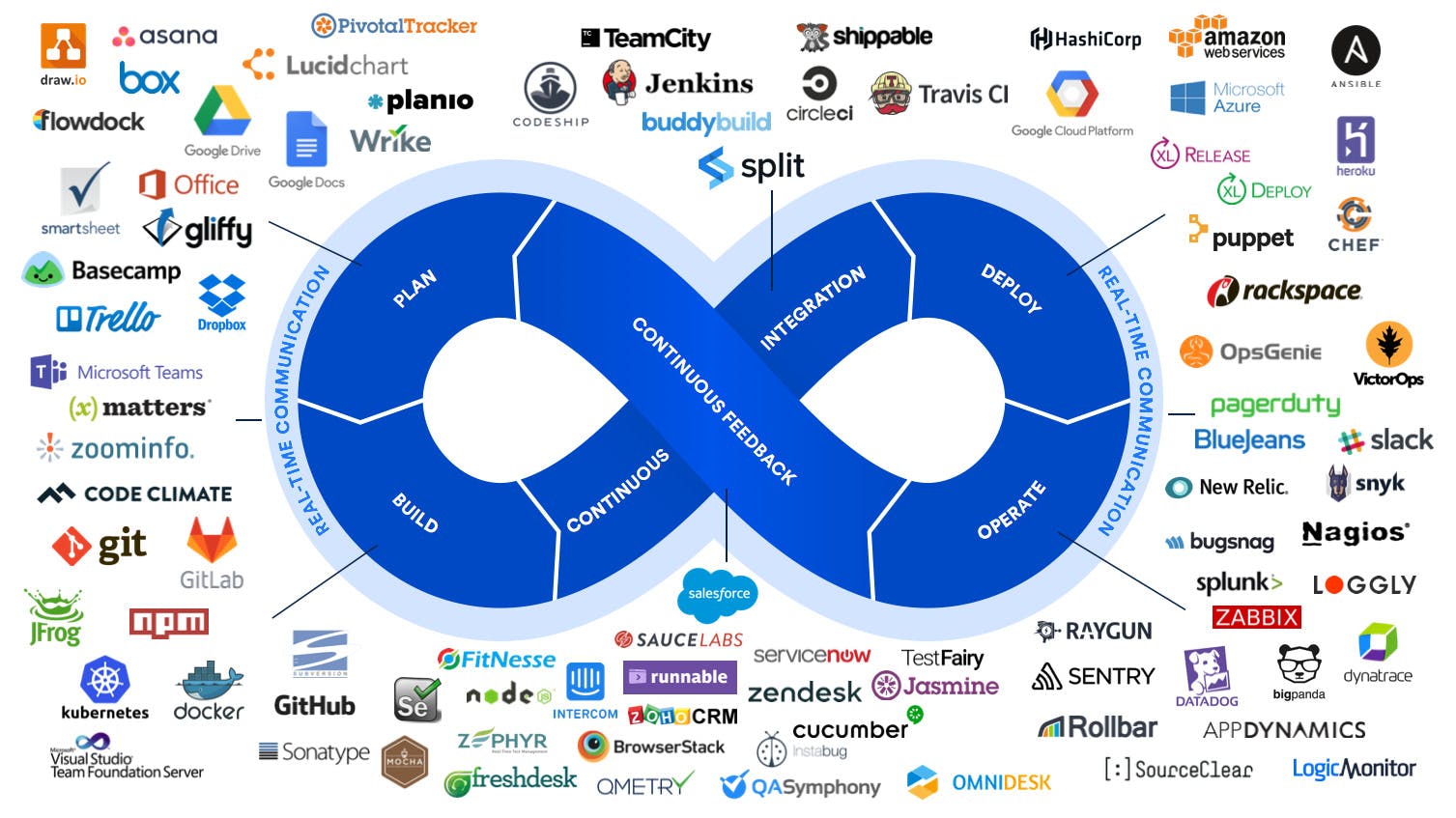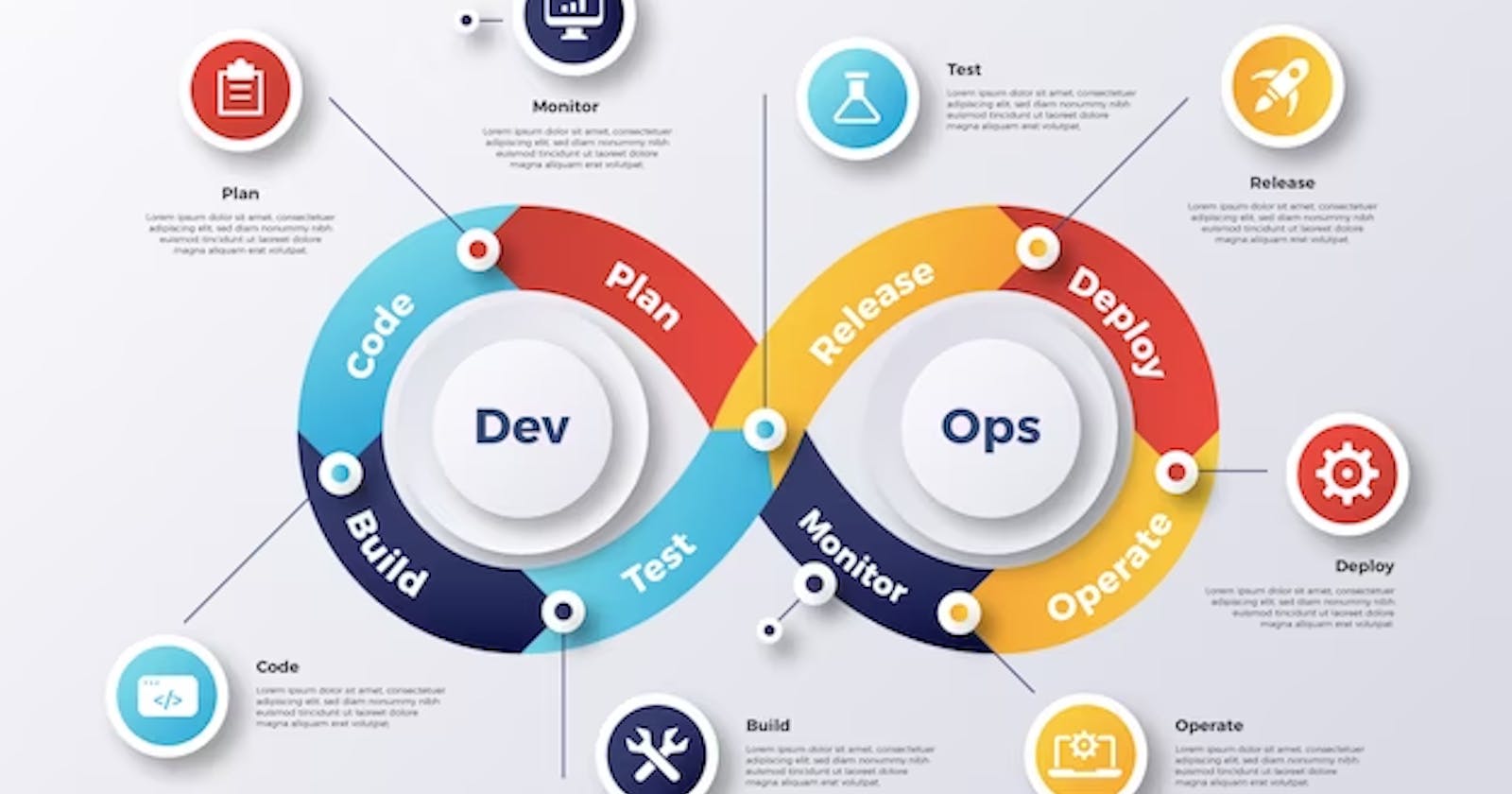Understanding DevOps
The cultural transformation of the software development industry
Introduction:
In today's fast-paced digital world, the demand for rapid and reliable software delivery is higher than ever. DevOps has emerged as an integral part of the software development industry, changing the way teams work together, improving productivity and delivering customer value faster than ever before. DevOps is an innovative methodology that merges the development of software (Dev) with IT operations (Ops) to simplify the software delivery cycle. In this blog post, we’ll introduce you to the basics of DevOps, its benefits, and its impact on the software development life cycle. Let's begin the journey into the world of DevOps!
What is DevOps?
DevOps is a software development culture that emphasizes collaboration between development and operations teams to improve the quality, speed and reliability of software delivery. The term DevOps comes from the combination of Development and Operations. The goal of DevOps is to automate the software delivery process to continuously release quality software to users.
DevOps, although a relatively new term, encompasses practices that have existed for a long time. Previously, development and operations teams worked in silos, resulting in slow release cycles, poor software quality, and increased costs due to the need for coordination and productivity loss.
In the early 2000s, several people began to advocate for a new approach to software development, which they call DevOps. DevOps is a set of practices that combines software development, operations, and security to shorten the systems development life cycle and provide continuous delivery with high quality.
The key principles of DevOps include:
Culture: DevOps is about changing the culture of an organization so that development and operations teams work together more closely.
Automation: DevOps relies on automation to streamline the software delivery process.
Measurement and feedback: DevOps uses measurement and feedback to identify areas where improvements can be made.
The culture shift of DevOps requires a focus on people, processes, and tools. It encourages developers and operations personnel to work more closely together as a single team rather than as distinct entities.
Benefits of DevOps:
One of the key advantages of DevOps culture is that it enables teams to develop and deploy high-quality software faster. This pace of software delivery can bring value to the customer quickly. The following are the benefits of DevOps:
Accelerated Time-to-Market: By automating manual processes, reducing errors and enabling faster release cycles. DevOps helps organizations bring new features and updates to market more quickly, gaining a competitive edge.
Improved Collaboration and Efficiency: DevOps promotes collaboration and shared responsibility among teams, fostering a culture of efficiency and innovation.
Enhanced Quality and Stability: With continuous integration, automated testing, and monitoring, DevOps ensures a higher level of software quality, stability, and reliability.
Increased Deployment Frequency: DevOps practices enable organizations to deploy code more frequently and reliably, enabling faster feedback loops and the ability to iterate rapidly.
Cost Optimization: By automating processes, optimizing resource utilization, and minimizing downtime, DevOps helps reduce operational costs and improve the overall efficiency of IT operations.
The Challenges of DevOps:
There are a number of challenges that organizations face when adopting a DevOps approach. Some of the key challenges include:
Culture change: DevOps requires a cultural change within organizations. This is because it requires development and operations teams to work together more closely and to share responsibility for the software delivery process.
Technology change: DevOps also requires changes to the technology that organizations use. This is because DevOps relies on automation and continuous integration/continuous delivery (CI/CD) tools.
Measurement and metrics: DevOps requires organizations to collect and analyze data about the software delivery process. This data can be used to identify areas where improvements can be made.
DevOps Lifecycle:
The DevOps lifecycle encompasses a series of stages that enable organizations to efficiently and continuously deliver software. The following stages provide a general overview of the DevOps lifecycle:
Plan: This stage involves identifying business requirements, defining project goals, and creating a roadmap for software development and deployment. DevOps professionals work with stakeholders and developers to prioritize and plan development work.
Develop: During this stage, development and testing take place. Developers write codes and automate tests, which are then reviewed by other team members to ensure accuracy and validity.
Build: In this stage, the code developed by the development team is combined and built as a single deployable package. The build stage transforms the code into an application that can be deployed on the server. Continuous Integration (CI) practices are typically applied, where code changes from multiple developers are merged frequently, and automated build processes are triggered. The goal is to catch integration issues and ensure the build is always in a deployable state.
Test: In this stage, various types of testing, including unit tests, integration tests, and system tests are conducted to ensure the quality and functionality of the software. Test automation is emphasized to expedite the testing process and provide quick feedback to developers. Continuous Testing practices are followed to identify and fix issues early in the development cycle.
Release: This stage involves preparing the software for deployment and involves a series of activities that are designed to ensure the software is delivered efficiently and effectively.
Deploy: This stage involves deploying the software to the target environments, whether it's a development, testing, staging, or production environment. Infrastructure as Code (IaC) tools are often used to provision and configure the necessary infrastructure resources automatically. Continuous Delivery (CD) and Deployment (CD) practices are employed to automate the deployment process and minimize the risk of human error.
Operate: Once the software is deployed, it enters the operations phase. Monitoring tools are utilized to collect data on the performance, availability and user experience of the software. Logs and metrics are analyzed to identify potential issues or bottlenecks. Automated alerts and notifications are set up to trigger responses for incidents and performance deviations.
Monitor: Continuous monitoring is an ongoing process throughout the DevOps lifecycle. It involves analyzing system and application metrics, log data, and user feedback to gain insights into the software's performance, identify areas for improvement, and make data-driven decisions. Monitoring also helps ensure compliance with service-level agreements (SLAs) and security requirements.
The DevOps lifecycle is iterative, meaning that the process continues to repeat, with each iteration focusing on delivering new features, addressing issues, and incorporating user feedback. Continuous feedback loops are established between development, operations, and other stakeholders to drive continuous improvement and innovation. It promotes collaboration, communication and automation within and across the development and operations teams to deliver high-quality software quickly and efficiently.
DevOps Tools and Technologies:
DevOps leverages a wide array of tools and technologies to support its practices, including:
Source Code Management: Git, SVN, Mercurial, and GitHub.
Continuous Integration (CI): Jenkins, CircleCI, TravisCI, GitLab CI, and Bamboo.
Configuration Management (CM): Ansible, Chef, Puppet, and SaltStack.
Containerization: Docker, Kubernetes, and Mesos.
Continuous Delivery and Deployment (CD): Jenkins, GitLab CI, Octopus Deploy, and GoCD.
Monitoring: Nagios, Zabbix, ELK Stack, and Prometheus.
Cloud Services: AWS, Microsoft Azure, Google Cloud Platform, and OpenShift.
Collaborative Platforms: JIRA, Confluence, GitHub, Trello, Asana, and Slack.
Testing Tools: Selenium, TestNG, Junit, and Cucumber.

Image credit: Audviklabs - https://audviklabs.com/wp-content/uploads/2022/05/devops-tools.jpg
The image above depicts the various phases of the DevOps lifecycle, as well as the tools and technologies that support its practices.
DevOps and Opensource:
DevOps and open-source are two trends that go hand in hand. DevOps practices encourage collaboration, communication, and the sharing of information across different teams. Similarly, open-source thrives on collaboration between developers, who often work together to make code available, perform code reviews, and fix bugs in a shared codebase.
The combination of DevOps and open source brings benefits such as increased speed and agility, improved software quality, and reduced costs. Open-source software enables DevOps by offering reliability, security, scalability, and flexibility through continuous testing and improvement by a large developer community. Additionally, open-source software is often cost-effective, being either free or available at a low cost, making it an attractive choice for DevOps implementations.
Here are some of the most popular open-source DevOps tools:
Git: Git is a distributed version control system that is used to track changes to code.
Docker: Docker is a containerization platform that allows developers to package and deploy applications in a consistent way.
Kubernetes: Kubernetes is an open-source container orchestration system that automates the deployment, scaling, and management of containerized applications.
Ansible: Ansible is an open-source automation platform that can be used to automate tasks related to DevOps, such as provisioning servers, deploying applications, and configuring systems.
Jenkins: Jenkins is an open-source continuous integration (CI) and continuous delivery (CD) platform that can be used to automate the testing and deployment of software.
These are just a few of the many open-source DevOps tools that are available. The synergy between DevOps and open source is undeniable, and it will continue to shape the software development and delivery landscape for years to come.
The Future of DevOps:
DevOps is a rapidly growing field, and it is expected to continue to grow in the years to come. This is because the benefits of DevOps are becoming increasingly clear, and the challenges of adopting a DevOps approach are becoming easier to overcome.
As DevOps continues to grow, it is likely to have a major impact on the software development industry. DevOps is already changing the way that software is developed, delivered, and operated. It is likely to continue to do so in the years to come.
Here are some of the key trends that are shaping the evolution of DevOps:
Cloud computing: Cloud computing is making it easier for organizations to adopt DevOps practices. Cloud-based tools and services can help organizations to automate the software delivery process and to improve the quality of software.
Containerization: Containerization is another technology that is helping to drive the evolution of DevOps. Containers allow developers to package their applications and dependencies together in a self-contained unit, which makes it easier to deploy and manage applications.
Microservices architecture: Microservices architecture is a software design pattern that breaks down applications into small, independent services. Microservices architecture makes it easier for development and operations teams to work together, as each service can be developed and deployed independently.
DevSecOps: DevSecOps is an extension of DevOps that focuses on security. DevSecOps ensures that security is built into the software development process, from the very beginning.
As these trends continue to evolve, DevOps is likely to become even more important for organizations that want to stay competitive.
Conclusion:
DevOps is transforming the software development industry, enabling teams to work together more efficiently. It promotes continuous feedback loops, and collaboration, and focuses on outcomes rather than output. Adopting DevOps helps companies meet customer requirements quickly, release high-quality software, and enhance customer satisfaction. In other words, DevOps culture is the future of software development.
Let me know your thoughts in the comment section. This blog is a part of my DevOps learning journey, and I welcome readers to share any additional resources or insights in the comments section below to further enhance my knowledge. Thank you for taking the time to read this blog.
Connect with me!
Twitter Account: https://www.twitter.com/sharsha315
LinkedIn Account: https://www.linkedin.com/in/sharsha315
GitHub Account: https://www.github.com/sharsha315
Useful Resources:
Cover page image credit: Freepik - https://img.freepik.com/free-vector/gradient-devops-illustration_23-2149370941.jpg
DevOps Toolchain: Wikipedia - https://en.wikipedia.org/wiki/DevOps_toolchain
16 DevOps Best Practices Every Developer Should Know: This article outlines the key principles of DevOps practice, as well as some common mistakes to avoid. - https://spacelift.io/blog/devops-best-practices
FreeCodeCamp (YouTube channel): DevOps Engineering Course for Beginners - https://youtu.be/j5Zsa_eOXeY
TechWorld with Nana (YouTube channel): What is DevOps? - https://youtu.be/0yWAtQ6wYNM
Kunal Kushwaha(YouTube channel): DevOps Bootcamp - https://youtube.com/playlist?list=PL9gnSGHSqcnoqBXdMwUTRod4Gi3eac2Ak
